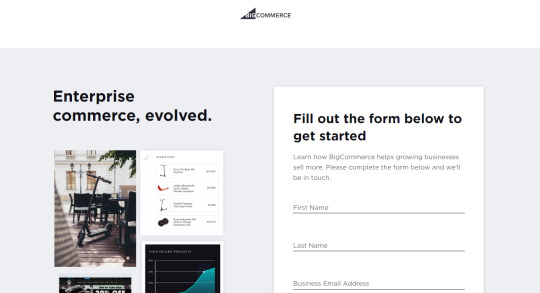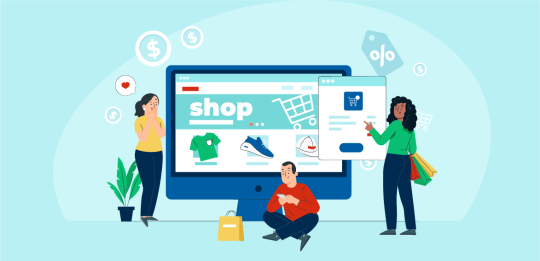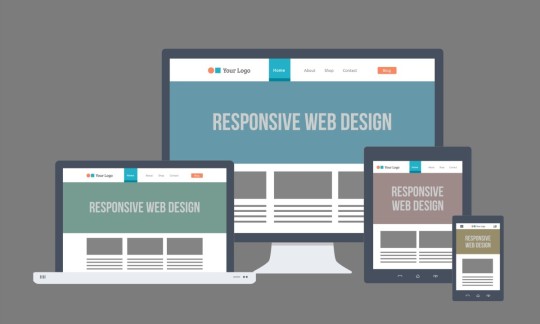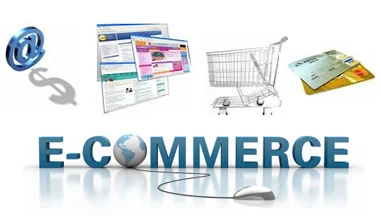#ECommercePlatform
Text

🚀 તમારી સફળતા માટે આજે જ પ્રથમ પગલું ભરો!
MDIDM INFOWAY ટ્રેનીંગ ઓફર કરી રહ્યા છે! આજે જ મુલાકાત લો - તમારા ઉજ્જવળ ભવિષ્ય માટે પહેલ કરો.
🔹 ટ્રેનીંગ વિષયો:
📱 Flutter Development
📱 Android Development
અને ઘણું બધું!
🔹 વિશિષ્ટતાઓ:
કુશળ ટ્રેનર્સ
આધુનિક સુવિધાઓ
ક્લાઈન્ટ અનુભવ
📍 સ્થળ: MDIDM INFOWAY, 305,Vision 20-20,near Ramapir Chokadi, Rajkot, Gujarat 360007.
🔹વધુ માહિતી માટે સંપર્ક કરો:
👉🏻Dr. Dharmendra Ambani : +91 94265 26980
👉🏻CEO. Dixit Dobariya : +91 83471 93531
👉🏻Hr. Umangi Prajapati : +91 90235 44435
MDIDM INFOWAY - તમારી સફળતાનો માર્ગદર્શક!
#GraphicDesign #LearnAndEarn #ProfessionalDevelopment #DesignCareer #JoinUs#internship #course #institute #process #intern #oppertunity #internprocess #job #wfo #mdidminfoway #graphic #learn #designer #begginer #start #newearn #chaseyourfuture
#GraphicDesign#LearnAndEarn#ProfessionalDevelopment#DesignCareer#JoinUs#internship#course#institute#process#intern#oppertunity#internprocess#job#wfo#mdidminfoway#graphic#learn#designer#begginer#start#newearn#chaseyourfuture#itcompany#flutter#androiddevelopment#webdevelopment#websitedevelopment#android#ecommerceplatform#flutterdevelopment
5 notes
·
View notes
Text
What is the most SEO friendly eCommerce platform among Magento, Shopify, and WooCommerce?
If compelled to make a selection solely based on SEO friendliness, WooCommerce would be the preferred option. It capitalizes on the SEO advantages of WordPress, provides ample customization opportunities, and is supported by various SEO plugins. Nevertheless, the ideal choice hinges on individual business needs, technical proficiency, and other considerations.
#SEO#EcommercePlatform#Magento#Shopify#WooCommerce#DigitalCommerce#OnlineBusiness#SEOComparison#TechInsights#EcommerceSEO#DigitalMarketing#WebsiteOptimization
6 notes
·
View notes
Text
BigCommerce review and Enterprise
BigCommerce is a popular e-commerce platform that provides businesses with the tools and features needed to create and manage an online store. Here's a review of BigCommerce based on its features, ease of use, pricing, and overall performance.

Features: BigCommerce offers a comprehensive set of features designed to help businesses build and run successful online stores. It provides a wide range of customizable templates and themes to create a visually appealing store. The platform includes robust product management tools, inventory management, flexible shipping options, and multiple payment gateway integrations. It also supports various marketing and SEO tools, including email marketing, social media integration, and built-in SEO features.
Ease of Use: BigCommerce is generally user-friendly and provides an intuitive interface for managing your online store. The platform offers a drag-and-drop editor, making it easy to customize the look and feel of your store without needing extensive technical knowledge. It also provides a user-friendly dashboard that allows you to manage orders, track inventory, and analyze sales data. However, for more advanced customization options, some coding knowledge may be required.
Pricing: BigCommerce offers different pricing plans to accommodate businesses of various sizes. The plans range from Standard to Plus, Pro, and Enterprise, with varying features and limitations. Pricing is competitive compared to other leading e-commerce platforms, but it may be slightly higher for small businesses compared to some other options. It's important to consider your business's specific needs and budget when choosing a plan.
Performance: BigCommerce is known for its strong performance and scalability. The platform is designed to handle high-traffic volumes and provides reliable hosting, ensuring that your online store remains accessible to customers. BigCommerce offers built-in security features, including SSL certificates, to protect your customers' data. Additionally, the platform integrates with popular third-party applications and services, allowing you to extend its functionality and enhance your store's performance.
Customer Support: BigCommerce offers 24/7 customer support through various channels, including phone, live chat, and email. The platform provides extensive documentation, video tutorials, and a community forum to help users find answers to their questions. Overall, the customer support is responsive and helpful in resolving issues or providing guidance.
Conclusion: BigCommerce is a robust e-commerce platform that provides businesses with the necessary tools to build and manage an online store. With its comprehensive features, ease of use, strong performance, and reliable customer support, BigCommerce is a popular choice for businesses of all sizes. However, it's essential to consider your specific requirements and compare BigCommerce with other e-commerce platforms to determine the best fit for your business.
Enterprise

BigCommerce Enterprise is the advanced version of the BigCommerce e-commerce platform specifically designed to meet the needs of large-scale businesses. It offers a range of features and capabilities tailored for enterprises with high-volume sales, complex product catalogs, and advanced customization requirements. Here are some key features and benefits of BigCommerce Enterprise:
Scalability: BigCommerce Enterprise is built to handle high levels of traffic and large product catalogs, ensuring that your online store can scale as your business grows.
Customization: The platform provides extensive customization options, allowing you to create a unique and branded shopping experience for your customers. You have full control over the design, layout, and functionality of your store.
Advanced B2B Functionality: BigCommerce Enterprise includes powerful B2B features such as customer-specific pricing, customer groups, quote management, purchase order workflows, and flexible payment options tailored for B2B transactions.
Integration and APIs: It offers robust integration capabilities, enabling you to connect with third-party systems, tools, and services. This allows for seamless integration with ERP, CRM, fulfillment, and other business systems.
Security and Compliance: BigCommerce Enterprise prioritizes security and compliance, providing features such as advanced security options, secure checkout, and adherence to PCI DSS compliance standards.
Dedicated Account Management: Enterprise-level customers receive dedicated account management and priority support to ensure they receive personalized assistance and guidance.
Performance and Reliability: BigCommerce Enterprise provides reliable hosting infrastructure, fast page loading speeds, and high uptime, ensuring that your store remains accessible and performs well for your customers.
To learn more about BigCommerce Enterprise, including pricing and specific features, it's best to reach out to the BigCommerce sales team or visit their official website for the most accurate and up-to-date information. They can provide detailed insights into how BigCommerce Enterprise can meet your specific business requirements and discuss any customization or integration needs you may have.
Get Your Enterprise
#BigCommerceEnterprise#eCommerceSolution#OnlineRetail#EnterpriseCommerce#eCommercePlatform#OnlineBusiness#RetailSolutions#DigitalCommerce#B2BCommerce#eCommerceGrowth
3 notes
·
View notes
Text
Don't slide back and forth indecisively!
It is time to choose the right platform for your eCommerce business.
#WooCommerce#shopify#ecommerceplatform#woocommercevsshopify#woocommercestore#ecommerce#wordpress#onlinebusiness
4 notes
·
View notes
Text
How to Migrate Your Store to a New Ecommerce Builder

Migrating your online store to a new ecommerce builder can be a daunting task. However, with the right approach and tools, you can ensure a smooth transition that minimizes downtime and preserves your store's SEO ranking. In this guide, we'll walk you through the steps on how to migrate your store to a new ecommerce builder efficiently.
1. Evaluate Your Current Ecommerce Platform
Before you begin the migration process, it's crucial to assess your current ecommerce platform. Identify the limitations you're facing and determine what features are lacking. This evaluation will help you select a new ecommerce builder that meets your business needs and offers the enhancements you require.
2. Choose the Right Ecommerce Builder
Selecting the right ecommerce builder is a critical step. Consider factors such as ease of use, scalability, customization options, and support services. Popular options include Shopify, WooCommerce, BigCommerce, and Magento. Research each platform's features and pricing plans to find the best fit for your store.
3. Backup Your Current Store Data
Before migrating, ensure that you have a complete backup of your current store data. This includes product information, customer details, order history, and website content. Having a backup will protect your data in case anything goes wrong during the migration process.
4. Prepare Your New Ecommerce Builder
Set up your new ecommerce builder and configure it according to your preferences. This step involves setting up your domain, customizing your store's design, and configuring payment and shipping options. Ensure that your new platform is ready to receive data from your current store.
5. Migrate Your Store Data
Data migration is a critical phase in the process. Use tools and plugins provided by your new ecommerce builder to transfer your store data. Many platforms offer step-by-step guides and support to help you through this process. Pay special attention to the migration of:
Product Information: Ensure all product descriptions, images, and metadata are accurately transferred.
Customer Data: Migrate customer accounts, including contact information and order history.
Order History: Keep a record of past orders to maintain continuity for your customers.
6. Test Your New Store
After migrating your data, thoroughly test your new store to ensure everything is functioning correctly. Check for broken links, missing images, and verify that all product details are accurate. Test the checkout process to ensure a seamless shopping experience for your customers.
7. SEO Considerations During Migration
Maintaining your SEO rankings during migration is crucial. Follow these SEO best practices to ensure your new store remains visible on search engines:
Redirects: Implement 301 redirects from old URLs to new URLs to maintain link equity and avoid broken links.
Metadata: Ensure that all meta titles, descriptions, and alt tags are transferred correctly.
XML Sitemaps: Submit updated sitemaps to search engines to help them index your new store quickly.
8. Launch and Monitor
Once you’ve completed the migration and testing, it’s time to launch your new store. Announce the launch to your customers through email and social media. Monitor your store closely for any issues and track your website’s performance using analytics tools.
Conclusion
Migrating your store to a new ecommerce builder can seem overwhelming, but with careful planning and execution, it can be a smooth process. By following these steps, you can ensure that your data is accurately transferred, your SEO rankings are maintained, and your new store is ready to provide an excellent shopping experience for your customers.
0 notes
Text
Diginyze Vs Others
Looking for an intelligent alternative to your eCommerce platform.
Discover why Diginyze is your best bet when it comes to eCommerce platform.
From AI chatbots to real-time analytics, here are 13 reasons why Diginyze leads and others follow.
Discover all 13 reasons here: https://www.diginyze.com/diginyze-vs-others/

#Infographic#Diginyze#AllInOneSolution#BusinessTransformation#FutureOfCommerce#OmnichannelCommerce#MachineLearning#GlobalEcommerce#RealTimeAnalytics#BusinessIntelligence#SocialCommerce#CustomerSupport#DigitalMarketing#MobileCommerce#ProductManagement#ConversationalAI#InventoryManagement#TaxCompliance#EcommercePlatform#DigitalTransformation
0 notes
Text

eCommerce Development Service by Connect Infosoft Technologies
Let us build your e-commerce store and propel your brand to new heights of success.
#connectinfosofttechnologies#connectinfosoft#multivendor#ecommercemarketplace#multichannellisting#ecommercesellers#ecommercemanagement#productmanagement#bestecommerce#multichannelselling#shippingsoftware#inventorymanagement#productlisting#multichannelmarketplace#ecommercesolution#ecommercedevelopers#devteam#onlinemarketplace#ecommerceplatform#digitalcommerce#retailtech#marketplacesolution#ecommercedevelopment#globalcommerce#digitalmarketplace#businesstech#ecommercetech#ecommercetools#onlineselling#retailsolution
1 note
·
View note
Text
How to Launch a Successful E-Commerce Business
Hey I’m Inzamul, Welcome to my article today I am going to breakdown How to Launch a Successful E-Commerce Businesss
In today's digital age, the e-commerce industry continues to flourish, offering entrepreneurs lucrative opportunities to establish thriving businesses. However, launching a successful e-commerce venture requires careful planning, strategic execution, and a deep understanding of the market landscape. Whether you're a budding entrepreneur or an established business looking to expand online, this comprehensive guide will walk you through the essential steps to launch and grow a profitable e-commerce business.
Unlock Your Online Success! Watch Our Exclusive Video for FREE and Start Earning Today!

Market Research: Understanding Your Audience and Niche
Before diving into the world of e-commerce, it's crucial to conduct thorough market research to identify your target audience and niche market. By understanding the needs, preferences, and pain points of your potential customers, you can tailor your products or services to meet their demands effectively.
Unlock Your Online Success! Watch Our Exclusive Video for FREE and Start Earning Today!
Analyzing Market Trends and Opportunities
Stay ahead of the curve by analyzing current market trends and identifying emerging opportunities in your industry. Leverage tools such as Google Trends, industry reports, and social media analytics to gain valuable insights into consumer behavior and preferences.
Leveraging Competitive Analysis
Gain a competitive edge by conducting a comprehensive analysis of your competitors. Identify key players in your niche, analyze their strengths and weaknesses, and identify gaps in the market that you can capitalize on.
Building Your E-Commerce Website: Design and Development
Your e-commerce website serves as the digital storefront for your business, making a lasting impression on potential customers. Focus on creating a user-friendly, visually appealing website that offers seamless navigation and an intuitive shopping experience.
Choosing the Right E-Commerce Platform
Selecting the right e-commerce platform is crucial for the success of your online business. Consider factors such as ease of use, customization options, scalability, and integration with third-party tools when choosing a platform that aligns with your business goals.
Designing a Responsive Website
With the increasing use of mobile devices for online shopping, it's essential to design a responsive website that provides a consistent experience across all devices. Optimize your website for mobile users to ensure easy navigation and fast load times.
Product Selection and Sourcing: Curating a Winning Product Catalog
The success of your e-commerce business hinges on the quality and relevance of your product offerings. Take a strategic approach to product selection and sourcing to ensure that you offer high-demand products that resonate with your target audience.
Unlock Your Online Success! Watch Our Exclusive Video for FREE and Start Earning Today!
Identifying Profitable Product Categories
Conduct market research to identify profitable product categories with high demand and low competition. Consider factors such as market trends, consumer preferences, and profit margins when selecting products to add to your catalog.
Establishing Supplier Relationships
Forge strong relationships with reliable suppliers and manufacturers to ensure a steady supply of high-quality products. Negotiate favorable terms and agreements to secure competitive pricing and maintain consistency in product quality and availability.
Marketing and Promotion: Driving Traffic and Sales
Effective marketing and promotion are essential for driving traffic to your e-commerce website and converting visitors into customers. Implement a multi-channel marketing strategy that leverages various online and offline channels to reach your target audience.
Search Engine Optimization (SEO) Strategies
Optimize your website for search engines to improve its visibility and ranking in organic search results. Focus on keyword research, on-page optimization, link building, and content marketing to attract organic traffic and increase your online presence.
Social Media Marketing Campaigns
Harness the power of social media to engage with your audience, build brand awareness, and drive traffic to your e-commerce website. Create compelling content, run targeted ads, and leverage influencer partnerships to expand your reach and attract potential customers.
Customer Service and Support: Building Trust and Loyalty
Providing exceptional customer service is paramount for building trust and loyalty with your customers. Invest in robust customer support systems and processes to address inquiries, resolve issues promptly, and ensure a positive shopping experience for every customer.
Unlock Your Online Success! Watch Our Exclusive Video for FREE and Start Earning Today!
Implementing Live Chat and Helpdesk Solutions
Offer real-time support to your customers through live chat and helpdesk solutions. Provide quick responses to inquiries, offer personalized assistance, and resolve issues efficiently to enhance customer satisfaction and retention.
Collecting and Analyzing Customer Feedback
Gather valuable feedback from your customers through surveys, reviews, and feedback forms. Analyze customer insights to identify areas for improvement, address pain points, and enhance the overall shopping experience.
FAQs (Frequently Asked Questions):
What are the essential steps for launching an e-commerce business? To launch a successful e-commerce business, you need to conduct thorough market research, build a user-friendly website, curate a winning product catalog, implement effective marketing strategies, and prioritize customer service and support.
How important is market research for an e-commerce business? Market research is crucial for understanding your target audience, identifying market trends, analyzing competitors, and making informed business decisions. It helps you tailor your products, services, and marketing efforts to meet the needs of your customers effectively.
What factors should I consider when choosing an e-commerce platform? When choosing an e-commerce platform, consider factors such as ease of use, customization options, scalability, integration capabilities, pricing, and customer support. Select a platform that aligns with your business goals and offers the features and functionalities you need to succeed.
What are some effective marketing strategies for driving traffic to an e-commerce website? Some effective marketing strategies for driving traffic to an e-commerce website include search engine optimization (SEO), social media marketing, email marketing, content marketing, influencer partnerships, and paid advertising campaigns.
How can I provide excellent customer service for my e-commerce business? To provide excellent customer service, prioritize responsiveness, offer multiple channels for communication (such as live chat, email, and phone support), personalize interactions, resolve issues promptly, and continuously seek feedback to improve the customer experience.
Conclusion:
Unlock Your Online Success! Watch Our Exclusive Video for FREE and Start Earning Today!
Launching a successful e-commerce business requires careful planning, strategic execution, and a relentless commitment to customer satisfaction. By following the steps outlined in this guide and leveraging proven strategies and best practices, you can navigate the competitive e-commerce landscape with confidence and achieve sustainable growth and success.
============================================
Thanks for read my article, How to Launch a Successful E-Commerce Businesss
How to Launch a Successful E-Commerce Business
How to Launch a Successful E-Commerce Business
Affiliate Disclaimer :
Some of the links in this article may be affiliate links, which means I receive a small commission at NO ADDITIONAL cost to you if you decide to purchase something. While we receive affiliate compensation for reviews / promotions on this article, we always offer honest opinions, users experiences and real views related to the product or service itself. Our goal is to help readers make the best purchasing decisions, however, the testimonies and opinions expressed are ours only. As always you should do your own thoughts to verify any claims, results and stats before making any kind of purchase. Clicking links or purchasing products recommended in this article may generate income for this product from affiliate commissions and you should assume we are compensated for any purchases you make. We review products and services you might find interesting. If you purchase them, we might get a share of the commission from the sale from our partners. This does not drive our decision as to whether or not a product is featured or recommended.
#EcommerceTips#OnlineBusinessSuccess#DigitalMarketing#Entrepreneurship#SmallBusiness#StartupAdvice#MarketingStrategy#BusinessDevelopment#EcommercePlatform#CustomerExperience#MarketResearch#ProductSelection#WebsiteDesign#SocialMediaMarketing#SEO#BusinessGrowth#BrandBuilding#CustomerService#EcommerceTrends#OnlineRetail#Ecommerce#OnlineBusiness#SmallBusinessTips
0 notes
Text
#ecommercewebsite#ecommerce#ecommercebusiness#ecommercestore#ecommercetips#webdesign#websitedesign#website#digitalmarketing#webdevelopment#websitedevelopment#ecommercedevelopment#ecommercemarketing#ecommercesolutions#seo#ecommerceplatform#wordpress#shopify#business#ecommercelife#magento#ecommercedesign#socialmediamarketing#ecommerceservices#marketing#webdeveloper#onlineshopping#ecommercewebsitedesign#ecommercewebsites#ecommercebrasil
0 notes
Text

🚀 Transform Your Career Today!
Don’t just dream about a career in graphic design, make it happen! Enroll now and start your journey to becoming a professional graphic designer with us.
✨ Why Choose Us?
👉🏻Learn and Earn: Gain hands-on experience while you earn.
👉🏻Professional Guidance: Learn from industry experts.
👉🏻Flexible Schedule: Study at your own pace, from anywhere.
👉🏻Comprehensive Curriculum: Master the latest tools and techniques.
📅 Start Now and Make Your Mark in the Design World!
Under the guidance of
👉🏻Dr. Dharmendra Ambani : +91 94265 26980
👉🏻CEO. Dixit Dobariya : +91 83471 93531
👉🏻Hr. Umangi Prajapati : +91 90235 44435
🔗 mdidminfoway.com
#GraphicDesign#LearnAndEarn#ProfessionalDevelopment#DesignCareer#JoinUs#internship#course#institute#process#intern#oppertunity#internprocess#job#wfo#mdidminfoway#graphic#learn#designer#begginer#start#newearn#chaseyourfuture#itcompany#flutter#androiddevelopment#webdevelopment#websitedevelopment#android#ecommerceplatform#flutterdevelopment
4 notes
·
View notes
Text
Ecommerce Websites: The Importance Of Responsive Design
Discover why responsive design is crucial for ecommerce websites success. Seamlessly adapt to any device, ensuring a smooth shopping experience for your customers.
Introduction:

An ecommerce website is your digital storefront on the internet. It facilitates the transaction between a buyer and seller. It is the virtual space where you showcase products, and online customers make selections. Your website acts as the product shelves, sales staff, and cash register of your online business channel.
Businesses might create a branded store experience on a store like Amazon, build their own commerce site on a dedicated domain, or do it all for a multi-channel approach.

What is Ecommerce Websites Responsive Design:

Responsive design in ecommerce websites refers to the approach of designing and developing websites that can adapt and respond to different screen sizes and devices. With the increasing use of smartphones and tablets for online shopping, it has become crucial for ecommerce websites to provide a seamless and user-friendly experience across all devices.
By utilizing responsive design techniques, websites can automatically adjust their layout, content, and images to fit the screen size of the device being used. This flexibility not only enhances user experience by providing easy navigation and readability, but also helps in maintaining a consistent brand image and message regardless of the device being used to access the website.
When it comes to ecommerce websites, having a responsive design is particularly important as it can lead to increased sales and conversions. With more and more people shopping online using their smartphones and tablets, a responsive design ensures that the website looks and functions optimally on all devices, thus reducing bounce rates and increasing customer engagement. Additionally, responsive design can improve search engine rankings, as search engines like Google prioritize mobile-friendly websites in their search results.
Importance of Responsive Design for Ecommerce Websites:

Responsive design plays a crucial role in the triumph of ecommerce websites as it can effortlessly adjust to various screen sizes and devices, guaranteeing a smooth user experience across all platforms. Through the implementation of responsive design, online businesses can improve user satisfaction by ensuring their website is user-friendly and visually captivating on any device, ultimately resulting in higher conversion rates.
Additionally, responsive design is essential for enhancing user experience through the optimization of website performance and loading times on mobile devices. As mobile shopping continues to increase in popularity, it is imperative for online businesses to focus on responsive design to meet the needs of the expanding consumer base that favors shopping on smartphones and tablets.
How Responsive Design Ensures a Smooth Shopping Experience:

Responsive design plays a crucial role in ensuring that ecommerce websites can seamlessly adapt to any device, whether it be a desktop computer, tablet, or smartphone. By utilizing responsive design techniques, websites are able to automatically adjust their layout and content to fit the screen size and resolution of the device being used. This not only enhances the user experience by providing a consistent and optimized shopping experience, but also helps to improve conversion rates and overall customer satisfaction.
Providing a consistent shopping experience across all devices is essential for ecommerce websites looking to attract and retain customers. In today’s digital age, consumers expect to be able to browse and make purchases on the go, regardless of the device they are using. By implementing responsive design, websites can ensure that customers have a seamless shopping experience no matter where they are or what device they are using. This consistency helps to build trust and loyalty with customers, ultimately leading to increased sales and revenue for the business.
There are several successful ecommerce websites that have effectively implemented responsive design to provide a seamless shopping experience across all devices. One example is Amazon, which has optimized its website to work flawlessly on both desktop and mobile devices. Another example is ASOS, a popular online fashion retailer, which has a responsive website that adapts to different screen sizes and resolutions.
Conclusion:

In conclusion, it is crucial to emphasize the significance of responsive design for ecommerce websites. Responsive design ensures that websites are optimized for various devices, providing a seamless user experience across desktops, tablets, and smartphones.This adaptability is essential in today’s digital landscape where consumers access online stores through a multitude of devices. By prioritizing responsive design, ecommerce websites can enhance user engagement, increase conversions, and ultimately drive business growth.
Visit: https://chennaiwebsitedesigner.in/
#DigitalMarketing#ecommercebranding#ecommercebusiness#ecommerceconversion#ecommercecustomers#ecommercegrowth#ecommerceindustry#ecommerceoptimization#EcommercePlatform#ecommercestrategy#ecommercetrends#ecommercewebsites#mobilecommerce#mobilefriendly#OnlineShopping#ResponsiveDesign#responsiveui#UserExperience#webdesign#webdevelopment
0 notes
Text

🌟 Exciting news, fam! 🌟 Check out the latest scoop on Adobe Commerce 2.4.7 with @Amigoways! 🚀 Dive into the newest features and enhancements that'll level up your e-commerce game! 💼 Get ready to revolutionize your online store!
💥 Want to know more? Head to our blog for all the details! 👉 https://www.amigoways.com/blog/unveiling-adobe-commerce-2-4-7-whats-new/
#Amigoways#Letsconnect#Ecommerce#AdobeCommerce#TechTrends#OnlineBusiness#UpgradeNow#EcommercePlatform#PlatformUpdates#NewFeatures#SecurityUpdates#ProductRecommendations#B2BFunctionality#ReleaseNotes
0 notes
Text
Best Online Store Builder for Small Businesses in 2024

Creating an online store is a crucial step for any small business looking to expand its reach and boost sales. In 2024, there are numerous tools available, but finding the best online store builder for small businesses can be challenging. This blog will guide you through the top choices to help you make an informed decision.
Why Choosing the Right Online Store Builder Matters
Selecting the best online store builder for small businesses can significantly impact your e-commerce success. The right platform can simplify your operations, enhance customer experience, and ultimately increase your revenue. Here are some factors to consider:
Ease of Use: For small businesses, a user-friendly interface is essential. You need a platform that doesn't require extensive technical knowledge.
Customizability: Every business is unique, so your online store should reflect your brand identity. Look for builders that offer a wide range of customization options.
Affordability: Budget constraints are common for small businesses. Finding a cost-effective solution without compromising on quality is vital.
Support and Resources: Excellent customer support and access to learning resources can help you navigate any challenges.
Top Online Store Builders in 2024
1. Shopify
Shopify remains a dominant player in the e-commerce space. It's renowned for its comprehensive features, ease of use, and scalability. Small businesses can benefit from its numerous templates and third-party app integrations, which allow for significant customization. Shopify also offers excellent customer support, making it a reliable choice for new entrepreneurs.
2. WooCommerce
For businesses already using WordPress, WooCommerce is an excellent option. It's a free plugin that transforms your WordPress site into a fully functional online store. WooCommerce is highly customizable and supports various plugins to extend its functionality. This flexibility makes it one of the best online store builders for small businesses that want to tailor their online presence.
3. Wix eCommerce
Wix is known for its drag-and-drop website builder, and its eCommerce solution is just as user-friendly. Wix eCommerce is ideal for small businesses that need a simple yet powerful platform. It offers a range of templates and easy integration with various payment gateways. Wix also provides robust SEO tools, which can help your online store rank higher in search results.
4. BigCommerce
BigCommerce is a feature-rich platform designed to support growth. It offers a variety of tools for managing products, processing orders, and analyzing sales data. BigCommerce is particularly suitable for small businesses with large inventories or those expecting rapid growth. Its advanced SEO features and multi-channel selling capabilities make it a top contender.
5. Squarespace Commerce
Squarespace is known for its stunning design templates, making it an excellent choice for businesses that prioritize aesthetics. Squarespace Commerce combines these beautiful designs with powerful eCommerce features. It's a great platform for small businesses that want to create a visually appealing online store without sacrificing functionality.
How to Choose the Best Online Store Builder for Your Business
When deciding on the best online store builder for small businesses, consider the following steps:
Define Your Needs: Understand what features are most important for your business. Do you need a wide range of templates, extensive customization options, or specific integrations?
Set a Budget: Determine how much you are willing to invest in your online store. Compare the costs and features of different builders to find the best value.
Try Before You Buy: Most platforms offer free trials. Take advantage of these to get a feel for the user interface and features.
Read Reviews: Look at customer reviews and testimonials to gauge the experiences of other small business owners.
Conclusion
In 2024, finding the best online store builder for small businesses is easier than ever with so many excellent options available. Shopify, WooCommerce, Wix eCommerce, BigCommerce, and Squarespace Commerce each offer unique features to cater to different needs and budgets. By considering your specific requirements and taking advantage of free trials, you can select the ideal platform to help your business thrive online.
0 notes
Text
AI Goes Green: Driving Sustainability in eCommerce
Turning green dreams into digital realities! With Diginyze, sustainability meets innovation.
We're harnessing AI to usher in a new era of eCommerce - one that's kinder to our planet.
From reducing waste to optimizing operations, find out how we're doing it in our latest blog.
Full story here: https://www.diginyze.com/blog/ai-goes-green-driving-sustainability-in-ecommerce/

#SustainableEcommerce#AIGoesGreen#Sustainability#EcoFriendlyBusiness#AIinEcommerce#SustainabilityRevolution#EcommerceInnovation#AIForSustainability#DigitalTransformation#SmartEcommerce#SustainableFuture#EcoFriendlyAI#ClimateSmartCommerce#SustainableSupplyChain#AIInnovation#SustainableOperations#GreenRevolution#EcommerceTrends#GreenEcommerce#AIforGood#Artificialintelligence#dx#ecommerceplatform#estore
0 notes
Text

With the rise of online marketplaces, social media platforms, mobile apps, and more, a multi-channel marketing strategy has become essential for businesses to thrive. This blog explores, what a multi-channel marketing strategy is and highlights the seven key benefits it brings to ecommerce businesses.
#connectinfosofttechnologies#connectinfosoft#multivendor#ecommercemarketplace#multichannellisting#ecommercesellers#ecommercemanagement#productmanagement#bestecommerce#multichannelselling#shippingsoftware#inventorymanagement#productlisting#multichannelmarketplace#ecommercesolution#ecommercedevelopers#devteam#onlinemarketplace#ecommerceplatform#digitalcommerce#retailtech#marketplacesolution#ecommercedevelopment#globalcommerce#digitalmarketplace#businesstech#ecommercetech#ecommercetools#onlineselling#retailsolution
1 note
·
View note
Text
How Shopify Can Help You Grow Your Business
In today's fast-paced digital economy, establishing a strong online presence is no longer optional—it's a necessity for businesses looking to thrive and succeed. Sign up on shopify to change your economic status and thrive to live a better life.
In the digital age, having a strong online presence is crucial for the success of any business. Whether you’re a small startup or an established enterprise, reaching customers through e-commerce platforms has become a necessity. Shopify has emerged as a powerful tool that empowers businesses of all sizes to create, manage, and grow their online stores effectively. In this article, we’ll explore…

View On WordPress
#BusinessGrowth#CustomerExperience#DigitalMarketing#DigitalTransformation#EcommercePlatform#EcommerceTrends#Entrepreneurship#GlobalExpansion#OnlineBusiness#RetailRevolution#ShopifyStore#ShopifySuccess#SmallBusinessTips#SocialCommerce#TechInnovation#tech#Technology
0 notes